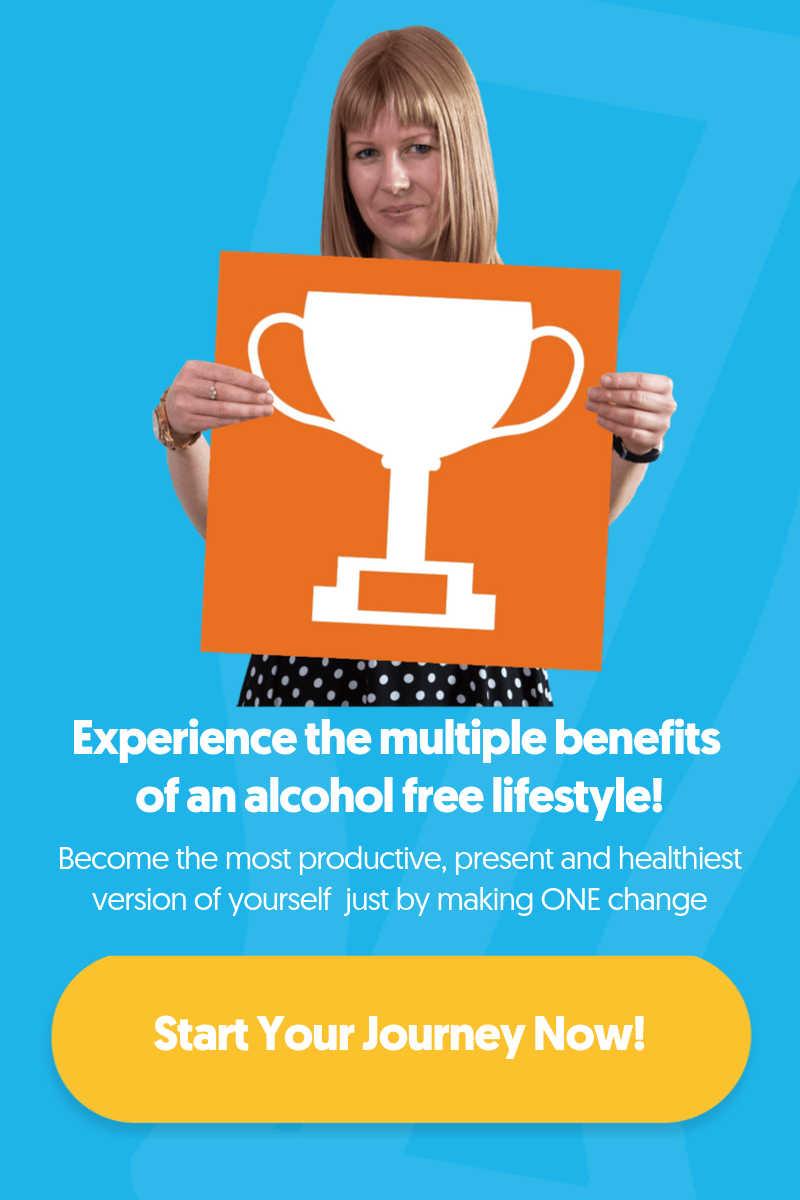Research shows significant links between alcohol consumption and cancer. Taking preventative measures as early as you can could reduce your risk long term.
It’s World Cancer Day 4th February, so to mark the occasion we have looked into the research exploring links between alcohol consumption and Cancer risk.
Alcohol and cancer facts
- Cancer is one of the leading causes of death world-wide.
- One in four cancers are lifestyle-attributive, therefore potentially preventable.
- Alcohol has been linked to causing cancers in seven main sites in the body.
- The type of alcohol you consume doesn’t matter – all alcohol holds the same threat.
- The probabilities associated with drinking and cancer increase with consumption, however even those drinking at low levels are more likely than those who do not drink alcohol at all.
- There are risk management measures and preventative actions you can take to reduce your likelihood of alcohol-related cancers long term.
Alcohol and cancer
Cancer is currently the leading cause of death in the UK, and second only to heart disease in the USA, carrying a huge financial and emotional burden on those impacted by the illness. An estimated one in four cancers are lifestyle-related, equating to a large number of cases which could be preventable. Reducing a variety of risk factors in day-to-day life can significantly decrease the chances of developing cancers influenced by lifestyle elements such as diet, exercise or habits that negatively impact health.
There has been mass public education about the links between smoking and cancer, however the same can’t really be said for the public perception of the links between drinking and developing cancer. A recent study conducted in London last year revealed that there was almost a 30% difference between the numbers of people who named smoking as a cause of cancer (81.9%), and those who named alcohol as a risk factor (53.5%). This may be due to how socially accepted drinking is in our society, with one in three people consuming alcohol globally, and a general lack of education on the risk that it can have on your health – even in lower volumes.
Alcohol-related cancers
In fact, alcohol consumption is responsible for 38% of cancers of the pharnyx, 34% of cancers of the oral cavity, 22% of cancers of the larynx, 13% of cancers of oesophagus, 8% of breast cancers, 7% of liver cancers and 6% of gastric cancers in the UK, and alcohol-attributable cancers at these sites make up 5.8% of all cancer deaths world-wide. The hazard drinking poses increases with the levels consumed, however links have been found even in low levels of consumption, particularly in those developing breast cancer.
Does the type of alcohol matter?
Fundamentally, alcohol is ethanol – a chemical substance, and it doesn’t matter what type you drink; beer, wine, gin, the ethanol within this drink is the same and carries the same dangers.
Why does alcohol increase cancer risk?
There are a number of ways in which drinking can damage the body, leading to carcinogenic effects, including;
- Damage to tissues due to increased irritation, especially in the mouth and throat.
- As alcohol is metabolised by the body it is broken down into a chemical substance called acetaldehyde which can damage the DNA inside cells.
- Acetaldehyde also prevents your body from repairing the damage caused, and when the DNA in a cell is damaged it can begin to grow improperly, creating tumors.
- Drinking alcohol can also lead to a process called oxidation within cells whereby a chemically reactive molecule is generated, damaging DNA, proteins and lipids in the body.
- The body goes into overdrive to filter it out as it recognises it as a toxin. Metabolising the alcohol takes priority over other vital nutrients, such as folate, needed to maintain a healthy body, meaning less of the nutrition from your diet is absorbed. Low folate levels may have an impact on the probability of breast and colorectal cancer.
- Alcohol can interfere with the hormones in the body – specifically estrogen which can increase the chances of breast cancer in women.
- Drinking is also associated with other risk factors such as smoking and weight gain which each can in turn increase secondary cancers.
Cancer is not the only disease or health issue that can be exacerbated by alcohol, for example, it can play a role in the development of heart disease, liver disease, mental health problems such as depression, weakening of the immune system and more. In addition, being under the influence can lead to increased chance of injury, memory problems and poor judgement.
Research showing evidence of increased alcohol-cancer risks
There have been a number of studies into the relationship between alcohol and certain cancers. The following studies have exposed some of the ways in which excessive drinking can increase damage to the body, labeling it as a caronagen.
Cancers of the throat
For some time it was believed that it was only smoking that enhanced risks of cancers in the throat, but there is now significant research to say that alcohol can also increase cancers independent of smoking.
It has been shown that alcohol interacts with the function of the salivary glands and causes an accumulation of microbes, leading to chronic infection. Susceptibility to carcinogens and cell damage then means there is a higher chance of developing cancer.
Cancers of the mouth
Research has uncovered that those who had four or more drinks a day had about five times the probability of mouth cancers compared to individuals who don’t drink. However, it also indicates an increased danger for people drinking moderately, meaning one drink per day also increases your risk of alcohol-related cancer.
Ethanol may also act as a solvent for other carcinogens that come into contact with the mouth and tongue, and in excess over time could result in decreased saliva flow resulting in decreased efficiency for clearing carcinogens present in the mouth.
Another study discovered that when you stop drinking, you can reduce your alcohol-related risk of getting oral cancer by 2% for each year you remain sober.
Breast Cancers
Alcohol interferes with hormone levels in the body, specifically increasing the amount of estrogen which in turn increases the risk factors for alcohol-induced breast cancers. While this is more likely to impact women, it is still possible for men to develop breast cancer.
The link to cancer has been shown even in moderate and low level drinkers with one in five cases of breast cancer attributed to light consumption.
Liver cancer
As the primary location for the metabolisation of alcohol in the body, the liver can suffer significant damage, leaving it more susceptible to mutations during cell repair.
Alcohol is the leading cause of liver cancer and research has shown use of more than 10 units (roughly equating to 750ml bottle of wine with an ABV 13.5%) daily for 10 years increases the risk by 5-fold. Even moderate consumption – one alcoholic drink per day – may be associated with a 1.1 times higher liver cancer risk.
What are the guidelines for use?
The guidelines and advice offered across the globe differs, however it is universally good advice to be aware of the units you are consuming. Keeping a note in your phone, in a notebook or on the NHS drinks tracker app will help you to stay aware of your intake relative to guidelines.
The NHS in the UK advises those who already don’t drink are not to start for any reason. Those who already drink are advised to reduce their intake as much as possible, and limit consumption to 14 units per week.
One unit equals 10ml or 8g of pure alcohol, which is around the amount of alcohol the average adult can process in an hour. If you are unsure about how many units are in the drinks you are consuming, check the labels as it is a legal requirement to state the number of units within commercial drinks. However, 14 units is about equal to 6 pints of average-strength beer or 10 small glasses of low-strength wine.
The NHS also advises these 14 units should not be consumed in one sitting, instead this is spread over multiple days, and you should have several alcohol-free days per week.
What can you do to lower risk
It is important to recognise the dangers that are associated with excessive – and even low level – consumption. Armed with this information, risk management plans can be made and other preventative measures can be taken.
Reducing your intake as much as possible will be the best way to reduce your probability of developing alcohol-related cancers. If you are currently drinking more than the government guidelines, then getting your weekly unit intake into this range should be a priority. If you are worried about how much you are drinking and how it may be affecting your health long term, seek advice from your GP.
Until there is further legislation that protects and informs people about the risk factors of drinking, it is good to be aware of the infrastructure that allows alcohol to be so widely accepted and available. For example, abundant advertising, lack of health and safety warnings on bottle labeling and a deep need for nation-wide education.
How long does it take to reduce your risk of alcohol-related cancers?
Unfortunately, quitting drinking won’t result in a quick fix. However, research has shown a steady decline in chances of alcohol-related cancers over time. It may take years, but quitting is a very important step to improving your overall health and decreasing your cancer risk.
What is OYNB doing to help?
If you would like support in changing your relationship with alcohol, then there are a number of options available to you – one of which is to participate in an alcohol-free challenge with OYNB. Choose to take a break from drinking for 28, 90 or 365-days, and receive daily videos guiding you through a proven step-by-step process that helps reframe drinking. Not only does this help you reduce your intake in the short term, but those who take a break from drinking are more likely to be able to maintain a reduced intake in the longer term.
Sources:
Hydes TJ, Williams R, Sheron N. Exploring the gap in the public's understanding of the links between alcohol and cancer. Clin Med (Lond). 2020;20(1):4-7. doi:10.7861/clinmed.ed.20.1.2
Connor J. Alcohol consumption as a cause of cancer. Addiction. 2017 Feb;112(2):222-228. doi: 10.1111/add.13477. Epub 2016 Jul 21. PMID: 27442501.
Noelle K. LoConte, Abenaa M. Brewster, Judith S. Kaur, Janette K. Merrill, and Anthony J. Alberg. Alcohol and Cancer: A Statement of the American Society of Clinical Oncology. Journal of Clinical Oncology 2018 36:1, 83-93
Bagnardi, V., Rota, M., Botteri, E. et al. Alcohol consumption and site-specific cancer risk: a comprehensive dose–response meta-analysis. Br J Cancer 112, 580–593 (2015). https://doi.org/10.1038/bjc.2014.579
Zakhari S. Overview: how is alcohol metabolized by the body?. Alcohol Res Health. 2006;29(4):245-254.
Chuang, SC., Lee, YC.A., Wu, GJ. et al. Alcohol consumption and liver cancer risk: a meta-analysis. Cancer Causes Control 26, 1205–1231 (2015). https://doi.org/10.1007/s10552-015-0615-3
Priya Grewal, Vijay Anand Viswanathen. Liver Cancer and Alcohol. Clinics in Liver Disease. 2012.
Riedel F, Goessler U, R, Hörmann K: Alcohol-Related Diseases of the Mouth and Throat. Dig Dis 2005;23:195-203. doi: 10.1159/000090166
Ogden, G. Alcohol and mouth cancer. Br Dent J 225, 880–883 (2018). https://doi.org/10.1038/sj.bdj.2018.921
Kevin D. Shield, Isabelle Soerjomataram, Jürgen Rehm. Alcohol Use and Breast Cancer: A Critical Review. 2016 https://doi.org/10.1111/acer.13071

An entrepreneur and former senior oil broker, Ruari gave up drinking after excessive consumption almost cost him his marriage, and worse, his life. Going alcohol-free improved his relationships, career and energy levels, leading to him founding OYNB to provide a support network for others.







